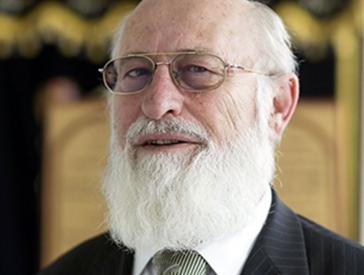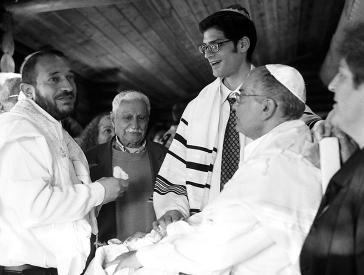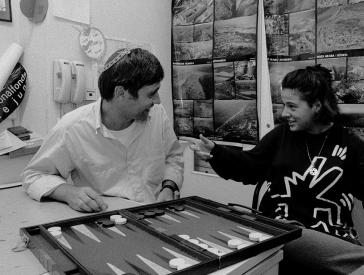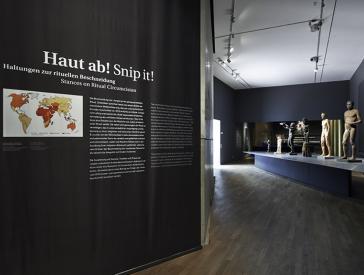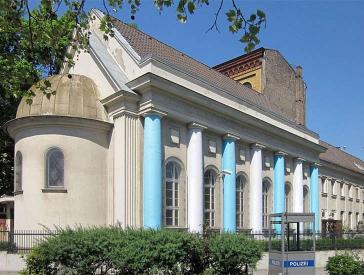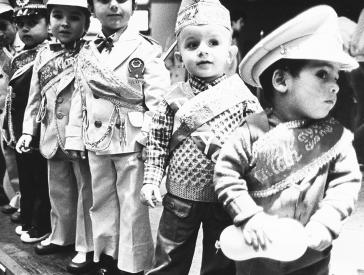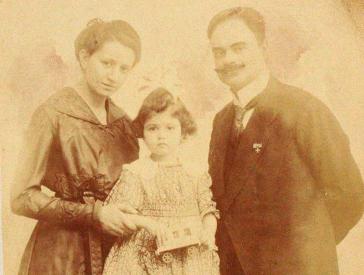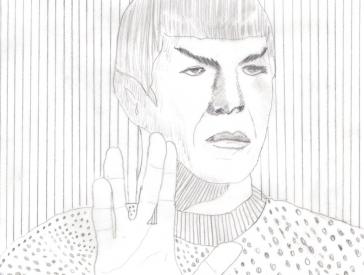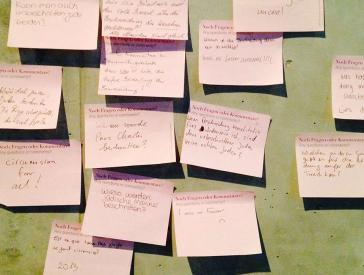„Teil von etwas Ganzem“
Ein Gespräch über eine rituelle Beschneidung, mit der die Geschichte überwunden wurde
In anderen Beiträgen haben wir von den Diskussionen berichtet, die das Thema Beschneidung nach sich ziehen kann. Dabei sollte allerdings nicht aus den Augen verloren werden, dass für die meisten jüdischen und muslimischen Familien der Ritus eine Selbstverständlichkeit ist – so auch für Amitay und Meital aus Israel. Das Paar lebt in Berlin und hat Anfang Dezember 2014 einen Jungen bekommen. Ich habe die beiden gefragt, wie sie die Brit Mila des kleinen Jaal erlebt haben.
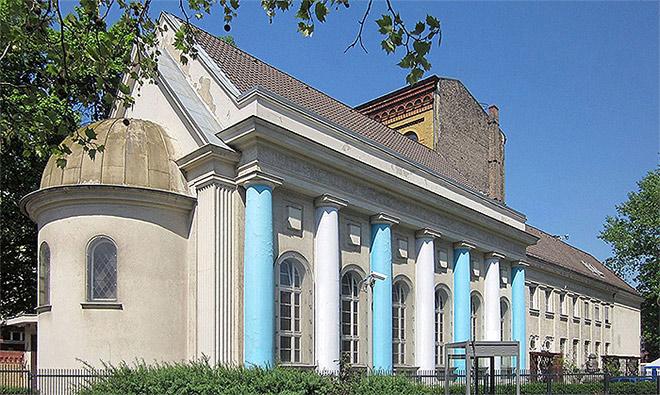
Die Brit von Jaal wurde in der Synagoge Fraenkelufer in Berlin gefeiert; Foto: Jörg Zägel (via Wikicommons)
Mitte Dezember habt ihr Jaal in der Synagoge Fraenkelufer von einem Mohel beschneiden lassen. Habt ihr lange überlegt, ob ihr diesen Schritt geht?
Meital: Für mich war es gar keine Frage.
Amitay: Für mich auch nicht. Als der Moment immer näher rückte, kamen mir aber doch einige Fragen. Die Brit des eigenen Sohnes ist eben doch etwas vollkommen anderes, als wenn man sie bei den Kindern von Freunden erlebt.
Was ist Brit Mila?
Brit Mila (hebr. für Bund des Wortes), Beschneidung, rituelle Entfernung der Vorhaut bei Jungen am achten Tag nach der Geburt, Zeichen des Bundes zwischen Gott und dem Volk Israel
Was für Fragen waren das?
Amitay: Warum macht man das mit so einem kleinen Baby? Er ist doch so unschuldig, das Reinste, was man sich vorstellen kann … Aber durch diese Fragen bekommt die Brit noch mehr Bedeutung – die Zweifel gehören für mich zum Ritus dazu.
Der Zweifel im Vorfeld stärkt die letztendliche Entscheidung?
Amitay: Ja, aber das ist nicht nur bei der Brit so, sondern generell in unserem Glauben. Wir führen ein religiöses Leben und für uns hat jedes Gebot zwei Ebenen: Zum einen befolgt man es, weil man muss. Zum anderen fragt man sich aber, warum. Und in diesem „Warum“ wird man zum Objekt der Praxis. Das ist für mich ein wesentliches Element des Glaubens.
Meital: Meine Mutter war geschockt, dass Amitay diesen Prozess des Fragens durchgemacht hat. Für ihre Generation ist die Brit noch viel selbstverständlicher.
Wie haben denn eure Freunde reagiert, als sie erfuhren, dass ihr Jaal beschneiden lasst?
Amitay: Für die war es auch selbstverständlich, allerdings versuchten einige Mitarbeiter des Krankenhauses in Berlin, in dem Jaal geboren wurde, uns die Beschneidung auszureden. Besonders eine Krankenschwester warnte uns, wir würden unserem Sohn wehtun und ihn traumatisieren.
Ihr habt die Beschneidung nun in der Synagoge von einem Mohel machen lassen. Eine Alternative wäre das Jüdische Krankenhaus gewesen, wo ein Arzt den Eingriff vorgenommen hätte. Stand das für euch zur Debatte?
Amitay: Ich hatte im Vorfeld viel recherchiert, um genau das zu entscheiden. Und es gibt die Ansicht, dass die Betäubungsspritze im Krankenhaus den Babys mehr weh tut als der eigentliche Eingriff.
Meital: Außerdem hätte eine Beschneidung im Krankenhaus nicht zum religiösen Rahmen gepasst, zu der Feier mit Familie und Freunden.
Amitay: Wir wollten diesen Ritus einfach so haben, wie er seit tausend Jahren durchgeführt wird. Außerdem gab es einen weiteren, ganz persönlichen Grund, warum mir die Brit in der Synagoge Fraenkelufer so wichtig war: Meine Familie stammt von beiden Seiten ursprünglich aus Deutschland und musste während der Zeit des Nationalsozialismus fliehen. Insofern hatte ich ein Gefühl der Überwindung und des Sieges, nun ausgerechnet hier in Berlin unseren Sohn beschneiden zu lassen – in einer Synagoge, die zerstört und wieder aufgebaut wurde. Und ich glaube auch, dass meine Großeltern vor 70 Jahren, als sie fliehen mussten, nicht gedacht hätten, genau hier die Brit ihres Enkels zu feiern. Das war schon etwas sehr Besonderes.
Wie hat der kleine Jaal reagiert?
Meital: In dem Moment, als es passierte, hat er etwas geweint, aber das war schnell wieder gut und schon eine Woche später sah man nichts mehr.
Welcher Moment der Brit hat euch als Eltern am meisten berührt?
Meital: Als Amitay den Segen für Jaal sprach.
Amitay: Das ging mir auch so. Das Sprechen der Segenswünsche fühlte sich wie eine Bestätigung der eigenen Existenz an, als ob man Teil von etwas Ganzem sei. Für mich war das ein ganz entscheidender Moment meines Lebens – neben unserer Hochzeit und der Geburt von Jaal. Ich habe eine tiefe Dankbarkeit gespürt.
Vor knapp drei Jahren gab es in Deutschland eine große Debatte über die Tradition der Beschneidung. Ihr habt damals noch in Israel gelebt – habt ihr die Diskussion dennoch mitbekommen?
Amitay: Ich studierte zu der Zeit an der Universität und muss sagen, dass mich die ganze Debatte meinen muslimischen Kommilitonen näherbrachte. Wir verstanden uns auf einer interreligiösen Ebene. Es ging ja nicht nur um die Brit, sondern um den Stellenwert von Religion insgesamt. Ich kann allerdings auch die Seite der Kritiker nachvollziehen: Es ist ein komplexes Thema und vollkommen in Ordnung, das in Frage zu stellen. Dabei muss es allerdings Grenzen geben, nämlich dann, wenn Kritik antisemitisch oder islamophob wird.
Das Gespräch führte Alice Lanzke, Medien.
Zitierempfehlung:
Alice Lanzke (2015), „Teil von etwas Ganzem“. Ein Gespräch über eine rituelle Beschneidung, mit der die Geschichte überwunden wurde.
URL: www.jmberlin.de/node/6569
Blick hinter die Kulissen: Beiträge zur Ausstellung „Haut ab! Haltungen zur rituellen Beschneidung“ (9)


